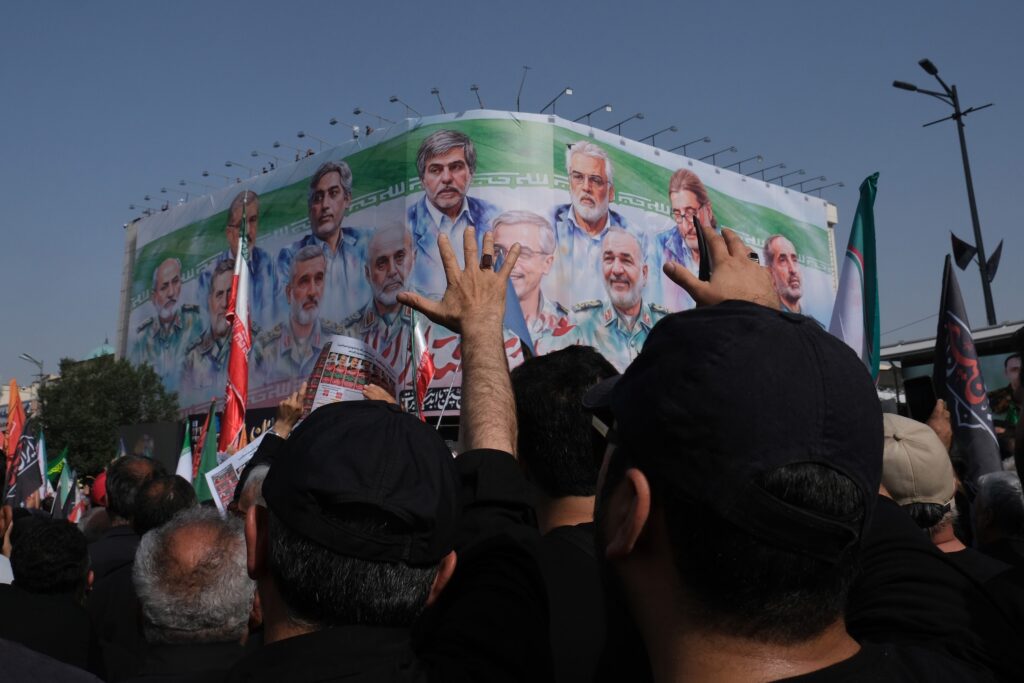Forty-six years after Iran’s 1979 revolution, the Iranian regime’s true Achilles’ heel remains not foreign pressure or external war, but the growing power of its own people and their organized resistance. The mullahs’ rulers—unelected and unaccountable—face a citizenry that is increasingly emboldened and defiant. With every new wave of protest, every strike, and every act of civil disobedience, the regime’s response is not reform, but repression.
In recent years, the world has witnessed a dramatic upsurge in state violence. The regime executed 975 people last year—making Iran the world’s top per capita executioner. Many of these victims are political prisoners, dissidents, or members of marginalized communities. In 2022, a new nationwide uprising erupted in response to the murder of Mahsa Amini. Since then, tens of thousands have been arrested and tortured, and hundreds have been murdered, executed, or disappeared.
Truck drivers, teachers, retirees, farmers, and students have all taken to the streets. The regime answers not with dialogue, but with bullets, gallows, and censorship. Its so-called “public executions” are a desperate attempt to project strength and instill fear. But, as history shows, such spectacles only reveal how tenuous the regime’s hold on power truly is.
Perhaps nothing exposes the regime’s panic more than its own chilling rhetoric. On July 7, the state-run Fars News Agency went so far as to openly call for a “repeat” of the 1988 mass executions of political prisoners—most of them members of the principal Iranian opposition group, the Mujahedin-e Khalq (MEK). It described that atrocity as one of the Islamic Republic’s most “brilliant records in the fight against terrorism” and declared, “today is the time to repeat this successful historical experience.” No fewer than 30,000 political prisoners were executed and buried in unmarked mass graves, in what the United Nations has condemned as a crime against humanity and a genocide. Such a brazen call for mass murder is not a show of strength, but a confession of fear. The regime’s leaders, haunted by the growing influence of the MEK-affiliated Resistance Units’ reach inside Iran, now see terror and bloodshed as their only means of holding back the tide of change. Their paranoia is no longer hidden; it is broadcast from the headlines of state media.
Despite this brutality, Iran’s spirit of resistance is unbroken. Truck drivers—threatened with revoked licenses, loss of livelihood, and prosecution—stand undeterred, demanding the release of arrested colleagues. Teachers and retirees stage coordinated strikes. Even in the face of mass arrests and death sentences, Resistance Units continue to operate in every corner of the country. The regime’s feverish efforts to stamp out dissent are matched only by the courage and persistence of ordinary Iranians.
Decades of appeasement of the Iranian regime have unequivocally failed. The hope that the regime would moderate itself is a dangerous illusion—a leopard never changes its spots. Continued outreach only extends the life of a theocracy fundamentally opposed to democratic values.
The United States, and the broader West, must not throw a lifeline to this regime at its weakest point. Instead, it should stand with the Iranian people and their organized resistance, recognize the right of Iranians to self-determination—free from all forms of dictatorship, whether monarchical or theocratic—and explicitly affirm their right to confront the Revolutionary Guards and other instruments of repression. This principled shift is both a moral necessity and a strategic imperative for stability and peace in Iran and the region.
In fact, this “Third Option” is not a new concept. In 2004, Iranian opposition leader Maryam Rajavi told the European Parliament that the solution for Iran lies neither in appeasement nor in war, but in regime change by the people of Iran and their organized resistance. “The policy of appeasement encourages the clerical regime to persist in its policies and, ultimately, imposes war upon Western nations,” she warned. “Let us not allow the Munich experience to be repeated—with clerics armed with nuclear bombs.” This warning resonates with even greater urgency today: years of appeasement have emboldened the regime, ultimately leading to the very war the world hoped to avoid.
The Third Option—change by the Iranian people and the organized resistance—is not only possible, but essential and inevitable. The rising tide of protests, the resilience of the Resistance Units, and the unity around a democratic platform have given Iranians real hope. Supporting this alternative is not just a moral imperative—it is the only practical path to peace, stability, and democratic governance in Iran and the wider region.
Tom Ridge was the nation’s first Homeland Security Secretary. He was the governor of Pennsylvania from 1995 to 2001.
The views expressed in this article are the writer’s own.
Read the full article here
